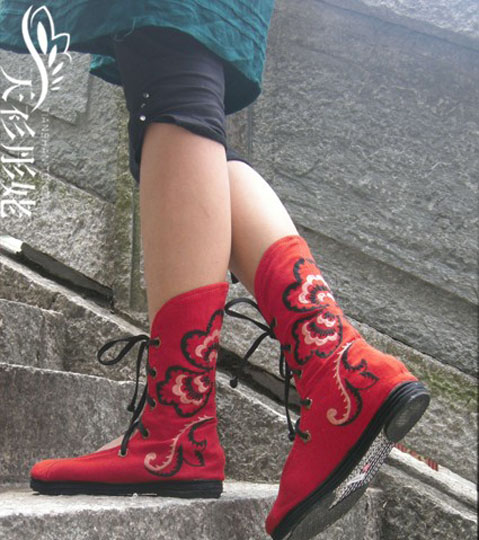Chinese shoe culture
Chinese Shoe Culture Release Date: September 12, 2010
From the perspective of cultural history, shoes are an important part of human clothing culture. In ancient times, they were generally referred to as "footwear". Shoes have made great contributions to promoting and developing human clothing reform. They not only focus on practicality but also have aesthetic decorative functions; some shoes even represent symbols of hierarchy, norms of etiquette, and deeply reflect the good wishes of people in various dynasties, with rich cultural connotations. From the aspect of production techniques themselves, shoes are also a form of art, possessing high cultural value, historical value, and artistic value, closely related to folklore, technology, aesthetics, archaeology, and other disciplines. It is a representation of a country's and nation's material and spiritual civilization. The development of Chinese shoes has undergone a process from nothing to something, from simple to complex, and from coarse to refined, with a very long history. From ancient times to the present, numerous creations have been made, not only in diverse styles but also in fruitful achievements in terms of shape, color, and skills. To better promote national cultural traditions, learn, inherit, and carry them forward, exploring the history of China's shoe culture is a very meaningful endeavor. In the old stone age of our country, primitive humans used various simple stone tools to capture animals. After obtaining the animals, they would bring them back to their caves, "eating their meat and using their skins," which was the ape-man period in history when they "ate raw meat and drank blood" and "ate grass and tree fruits and wore the skins of birds and beasts." To avoid being affected and threatened by external climatic conditions and ground conditions, they not only made animal skin clothes to resist cold winds but also knew how to use animal skins to protect their feet, that is, simply wrapping their feet with animal skins to achieve the purpose of not freezing or being injured. In ancient times, human clothing was divided into headwear, upper garments, lower garments, and footwear. Footwear was the general term for shoes and socks in ancient times. At that time, social productivity was extremely low, and textile technology had not yet been invented. "Women did not weave; the skins of birds and beasts were enough for clothing" (Han Fei, "Five Pests"). According to experts' research, humans experienced a barefoot period before inventing shoes. In colder regions, the original inhabitants at that time used small leather straps to wrap whole pieces of cut animal skins around their feet, which were essentially animal skin socks. This was the earliest "footwear," with a history of tens of thousands of years. Because it was used to wrap the feet, it was also called "foot-wrapping skin." It is inferred that this was the most ancient primitive shoe and the original form of today's shoes. Although such "primitive shoes" have not been discovered in our country so far, archaeological artifacts reflecting the boots and shoes worn by ancient residents have provided vivid materials for studying the cultural history of China's prehistoric period. In the autumn of 1973, in a Ma家Yao-type tomb in Shang Sunjiazhai, Datong County, Qinghai Province, a piece of pottery from the clan period was unearthed. A person depicted on it was already wearing shoes, and the shoe tips were upturned. The upturned shoe tip is one of the most typical features of ancient Chinese shoes. Historical records indicate that the upturned shoe tip in China started in the pre-Qin period. However, based on the discovery of the above artifacts, the origin period of the upturned shoe tip can be traced further back. The Majiayao culture belongs to the Neolithic Age. According to measurements, its specific era dates back 5,000 to 5,800 years ago, roughly equivalent to the era of Yan Emperor to Yellow Emperor in Chinese legends, which is the transition period from primitive society to slave society. So, how did the original people at that time gradually transition from "foot-wrapping skin" to shoes? What materials were used to make the shoes and the upturned tips they wore? Were they leather boots, straw shoes, or wooden clogs? What was their exact shape? We are still in the dark about these questions.
